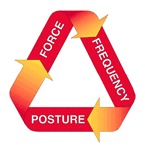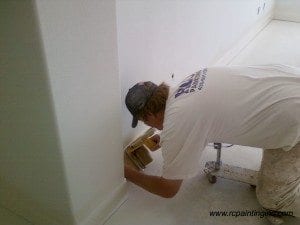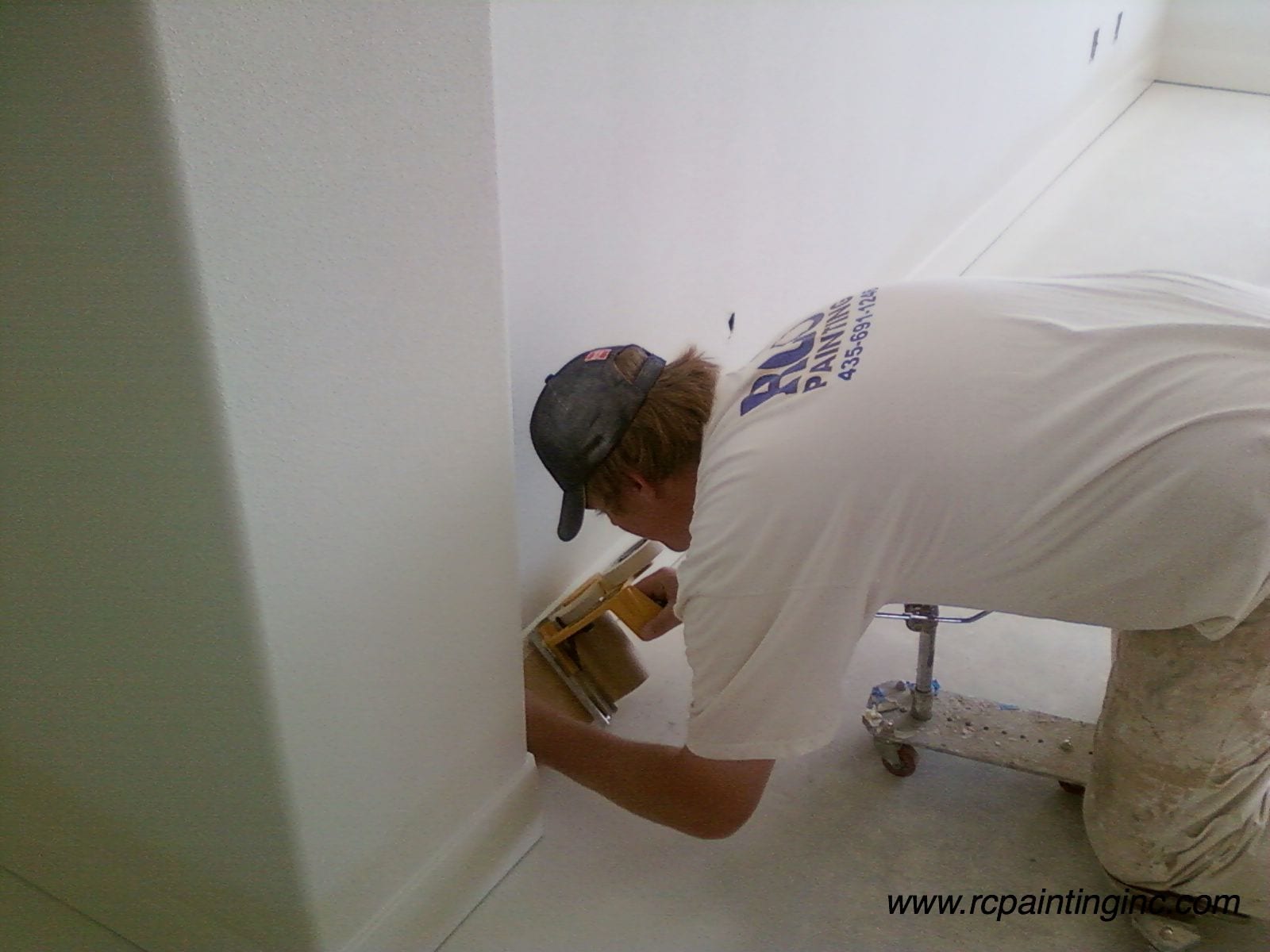What does that really mean?
 A recent article in American Painting Contractor addressed this recently and broke it down into three sections.
A recent article in American Painting Contractor addressed this recently and broke it down into three sections.
- Posture
- Force
- Frequency
I think it is important that contractors look at this, for themselves and their employees. My husband spent the first 20 years of his painting career thinking he was invincible, always pushing himself and employees to get the job done, which he always did. He was the one who carried two five’s at a time up the stairs, sprayed for hours in 100 degree heat, skipping meals and working in unnatural positions. As he got older, it took its toll, and he decided to work smarter, not harder.
He looked for ways to accomplish this. He implemented some changes, such has using a Racatac, hand carts/wagons for moving paint and material, using extension poles, even getting the crew to do stretching before starting. We did a lot of new construction, and they took some ribbing for that from other trades!
He experimented and found that the crews were more productive when they were well rested, hydrated and had the right tools, unfortunately his body had taken too much abuse and he became completely disabled three years ago due to chronic pain. I know several other painters that suffer from the afflictions discussed in the APC article and looked for some ways to share more suggestions.
Ergonomics in the workplace:
Some tools are advertised as “ergonomic” or are designed with ergonomic features. A tool becomes “ergonomic” only when it fits the task you are performing, and it fits your hand without causing awkward postures, harmful contact pressures, or other safety and health risks. If you use a tool that does not fit your hand or use the tool in a way it was not intended, you might develop an injury, such as carpal tunnel syndrome, tendonitis, or muscle strain. These injuries do not happen because of a single event, such as a fall. Instead, they result from repetitive movements that are performed over time or for a long period of time, which may result in damage to muscles, tendons, nerves, ligaments, joints, cartilage, spinal discs, or blood vessels.
Posture
Awkward postures make more demands on your body. In some cases, the placement of the work piece will affect your shoulder, elbow, wrist, hand, or back posture. Whenever possible, choose a tool that requires the least continuous force and can be used without awkward postures. The right tool will help you to minimize pain and fatigue by keeping your neck, shoulders, and back relaxed and your arms at your sides.
Function
A Google search for ergonomically correct painter’s tools doesn’t really show many results for professional painters, a lot of DIY suggestions though. This brush holder from Galaxy G was the closest I could find for professionals.
http://www.youtube.com/watch?v=_cHGxr5CoH0
One of our employee’s favorites was the Racatac, This allowed them to do low work with less stress on the back.

What are some of the methods/tools do you use? Leave a comment below.


Staying hydrated is very important. Not just for while you are working, but all the time. Staying hydrated helps my body recover after a days work. I can tell when I am dehydrated when I wake very stiff in the morning. The days I stay hydrated help me get moving the next day.
Stretching after your day is over is also important. After a ride home in the truck for 30mins to an hour after constantly moving all day can really tighten your muscles up if you don’t cool them off properly. Professional painting is a day long workout, my body is happier with me when I pay attention to that fact and treat it accordingly.
After years of holding the paint pot in my left hand I now have tendonitis in my elbow. Now having to hold the paint pot differently or place it on something next to me. I also like the comment about staying hydrated, very good point!
Learning to paint right-handed AND left-handed helped me a lot with repetitive motion pain–it took a little extra time at first but it was worth it. Also, don’t underestimate the benefits of a good massage therapist. I’m talking about somebody who really works out the calcium deposits and tight muscles. It’s not a “pleasure” massage–in fact it almost brings you to tears if the person is doing it right, but I’ve been amazed at how so many aches and pains can be cured that way, especially in the knees, elbows, and shoulders. Also, I had severe tendonitis in my elbows for a number of years and one session with an acupuncturist fixed it. Might not work for everybody but it’s worth a try and not very expensive.
Great tips. Important to keep awareness of practical matters within all of our crews.